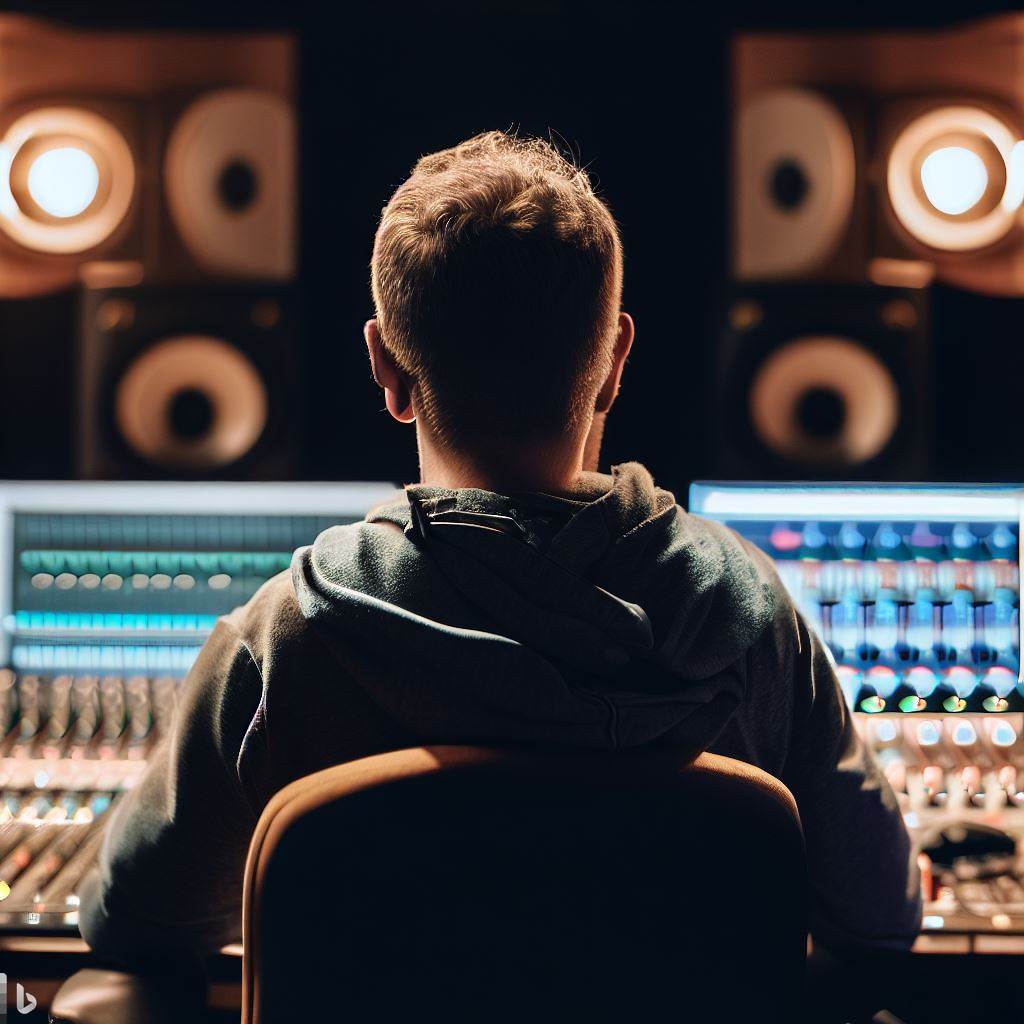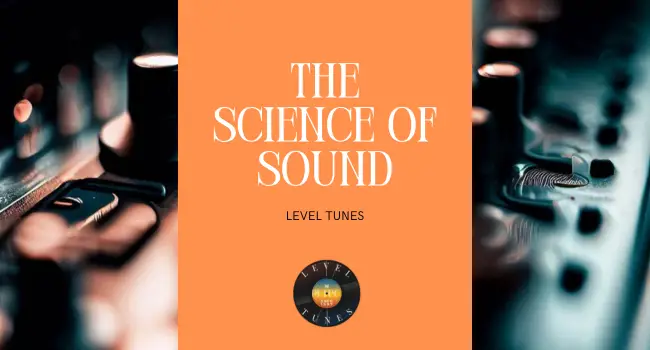The Science Of Sound: How Audio Engineering Affects The Listening Experience Of Top Songs
As an audio engineer, I’m constantly fascinated by the intricate and complex nature of sound. It’s incredible to think about how a simple melody or chord progression can be transformed into something truly magical through careful mixing and mastering.
In this article, we’ll explore the science behind sound engineering and how it affects our listening experience when it comes to top songs.
When you listen to your favorite song on the radio, have you ever stopped to consider why it sounds so good? There are countless factors that go into creating a high-quality recording, from microphone placement and EQ settings to compression techniques and reverb levels.
By understanding these elements in greater detail, we can gain a deeper appreciation for the artistry that goes into producing music that resonates with us on an emotional level.
So let’s dive in and take a closer look at how audio engineering impacts some of today’s most popular tracks!

The Mixing Process: Balancing Instruments And Vocals
When it comes to producing a top song, the mixing process can make or break its success.
Equalization techniques are crucial in balancing the frequencies of each instrument and vocal track, ensuring that no sound overpowers another.
Panning strategies also play a significant role in creating depth and dimension within the mix. By placing instruments and vocals at different positions in the stereo field, engineers can create an immersive listening experience for their audience.
Volume automation tricks allow engineers to control the dynamics of each track, making sure that they blend seamlessly together without any abrupt changes in volume.
Vocal tuning methods are used to correct pitch imperfections and ensure that every note is on key.
Instrument isolation tricks also come into play when trying to eliminate unwanted background noise or isolate specific sounds from a particular instrument.
With all these techniques combined, audio engineers can produce a well-balanced mix that enhances the overall quality of a song and creates an emotional connection with the listener.
Mastering: Polishing The Final Product
After the mixing process comes mastering, which is where the final touches are added to a song before it’s released.
Mastering involves several equalization techniques that enhance certain frequencies and balance out others. It also includes adjusting dynamic range, or the difference between the loudest and softest parts of a song, so that it sounds consistent throughout.
However, there has been controversy around mastering in recent years due to the ‘loudness wars.’ This term refers to the trend of making songs as loud as possible for commercial purposes, often resulting in a loss of dynamic range and overall quality. Some argue that digital mastering exacerbates this issue compared to analog mastering. Regardless, audio engineers must consider how their mastering decisions will affect playback on different mediums such as streaming services, vinyl records, and radio broadcasts.
Three Key Aspects of Mastering:
- Balancing EQ: Audio engineers use various tools like compression and saturation to adjust individual frequency ranges within a mix.
- Dynamic Range Control: The goal is to keep an even balance between quiet and loud sections while still maintaining intensity.
- Medium-Specific Mastering: Different mediums have varying technical limitations when it comes to frequency response, stereo image width/positioning, etc., so audio engineers must master music with these characteristics in mind.
Overall, mastering can make all the difference in how a song sounds across different listening environments. A skilled audio engineer must carefully apply equalization techniques while considering dynamic range control and medium-specific considerations to create a polished final product worthy of top charts.

Effects And Their Impact On The Sound
Now that we have a grasp on the basics of audio engineering, let’s dive deeper into some specific effects and techniques that engineers use to create top-quality sound.
One such technique is equalization or EQ, which involves adjusting the balance of frequencies in a track to enhance certain elements and minimize others. This can be particularly useful for cleaning up muddy mixes or emphasizing vocals over instruments.
Another crucial aspect of audio engineering is the use of reverberation effects. These simulate the natural echo and decay of sounds in different environments, adding depth and dimensionality to tracks.
Distortion effects are also commonly used to add grit and character to instruments like guitars or synths. And with stereo imaging techniques, engineers can manipulate the placement of sounds within the stereo field to create a more immersive listening experience.
But how do these effects impact overall sound quality? Engineers often rely on frequency response analysis tools to ensure that each element is balanced properly across all frequencies, preventing any harshness or muddiness in the mix.
By skillfully employing various audio engineering techniques, they can create songs that not only sound great but also evoke emotional responses from listeners – whether it’s an energetic dance beat or a melancholy ballad about lost love.
Compression: Maintaining Consistency In The Track
Dynamic range is a crucial element of music production. It’s the difference between soft and loud sounds, which can create contrast and depth within a track.
However, too much dynamic range can make it difficult to maintain consistency in the listening experience. This is where compression comes into play.
Compression is the process of reducing dynamic range by attenuating loud sounds while leaving softer sounds unaffected. The goal is to bring down peaks in volume that might otherwise be ear-splittingly loud or cause distortion.
But there’s a fine line between using compression effectively and overusing it, leading to what’s known as the ‘loudness war.’ Attack time and release time are essential factors when employing compression; they determine how quickly or slowly the compressor reacts to incoming signals.
Multiband compression allows for greater control over specific frequency ranges, enabling engineers to shape the sound more precisely without affecting other parts of the audio spectrum. With careful use of these parameters, audio engineers can ensure that their tracks have consistent levels throughout, creating an enjoyable and balanced listening experience for audiences everywhere.
As we’ve seen, balancing dynamic range with consistency is one of the most critical aspects of audio engineering. Compression plays an indispensable role in achieving this balance, but it must be used judiciously so as not to ruin the original intent behind a song’s composition or performance.
By controlling attack time, release time, and utilizing multiband compression techniques appropriately, audio engineers can achieve optimal results on any given track – all while preserving its unique character and creative vision!

The Importance Of Audio Engineering In The Music Industry
As music lovers, we all have our favorite songs that we can listen to for hours on end. But what makes those songs so special?
It’s not just the melody or lyrics – sound quality plays a huge role in creating an unforgettable listening experience. That’s where audio engineering comes into play.
Professionalism expectations are high in the music industry, especially when it comes to sound quality. In order to deliver top-notch results, audio engineers must possess technical knowledge and expertise in using studio equipment and audio software.
They work tirelessly behind the scenes to ensure every note, pitch, and tone is captured perfectly, making sure every song sounds its best whether you’re listening through headphones or blasting it through speakers at a concert venue.
Without their hard work and dedication, our favorite tunes would simply fall flat.
Frequently Asked Questions
What Is The History Of Audio Engineering And How Has It Evolved Over Time?
As an audio engineering writer, it is impossible to discuss the science of sound without acknowledging the evolutionary changes in this field throughout history.
From early experiments with electricity and acoustics to modern-day digital technology, key players have made significant contributions that paved the way for notable studios and groundbreaking technological advancements.
The influence of audio engineering on the music industry cannot be overstated, as it has enabled artists to express themselves more fully while providing audiences with a richer listening experience than ever before.
Understanding the history of audio engineering is essential for anyone who wants to appreciate its impact on our lives today.
How Do Different Genres Of Music Require Different Approaches To Audio Engineering?
When it comes to audio engineering, different genres of music require specific techniques. Soundscaping differences are critical in ensuring that each genre is represented authentically and uniquely.
Instrumental balance plays a massive role in achieving the intended feel of a song.
Vocal treatment can be the difference between an artist’s success or failure.
Mixing and mastering variations ensure that each track has its unique identity.
As an audio engineer, understanding these nuances is essential for creating successful tracks that resonate with audiences on a deeper level.
Can Audio Engineering Be Learned Through Self-Teaching Or Is Formal Education Necessary?
Aspiring audio engineers may wonder if they need formal education to master the craft. While certification programs, apprenticeships and mentorship can be effective in honing skills, many online resources provide comprehensive guides on mixing, mastering and recording techniques.
However, practical experience is irreplaceable when it comes to applying these concepts in real-world settings. Self-teaching requires discipline and dedication but with the abundance of information available at our fingertips, anyone can learn the fundamentals of audio engineering.
Nevertheless, a combination of theoretical knowledge and hands-on practice will ultimately lead to success in this field.
What Are Some Common Mistakes Made By Amateur Audio Engineers And How Can They Be Avoided?
As an audio engineering writer, I can tell you that one of the most common mistakes made by amateur audio engineers is not fully understanding mixing techniques.
Knowing how to properly use EQ and compression settings are essential in creating a balanced mix.
Additionally, room acoustics play a crucial role in the final sound output, so it’s important to have proper monitoring solutions in place to accurately hear what’s going on.
These mistakes can easily be avoided through formal education or self-teaching with the right resources and mentorship.
How Do Advancements In Technology Continue To Shape The Field Of Audio Engineering?
Advancements in technology continue to shape the field of audio engineering, allowing for more immersive experiences such as virtual reality and 3D audio.
Machine learning is also playing a significant role in enhancing sound quality by analyzing data and adjusting parameters accordingly.
Personalized sound has become increasingly popular with listeners who desire an intimate listening experience tailored to their preferences.
These developments are transforming the way we consume music and other forms of media, creating a new era of audio engineering that prioritizes individualized experiences.
All in All
In conclusion, audio engineering has come a long way since its inception in the early 20th century. With advancements in technology and changes in musical styles and preferences, it is important for audio engineers to stay up-to-date with the latest techniques and equipment.
As an audio engineer myself, I believe that education is crucial in mastering this field. While self-teaching can be helpful, formal education provides a more comprehensive understanding of the science behind sound and how it affects our listening experience.
Avoiding common mistakes such as over-compression or improper EQ settings can make all the difference in producing top-quality tracks.
Overall, the evolution of audio engineering will continue to shape the music industry and impact how we consume music. As audio engineers, it is our responsibility to adapt and innovate while staying true to the artistry of each individual genre.
Thanks for reading
TBone




